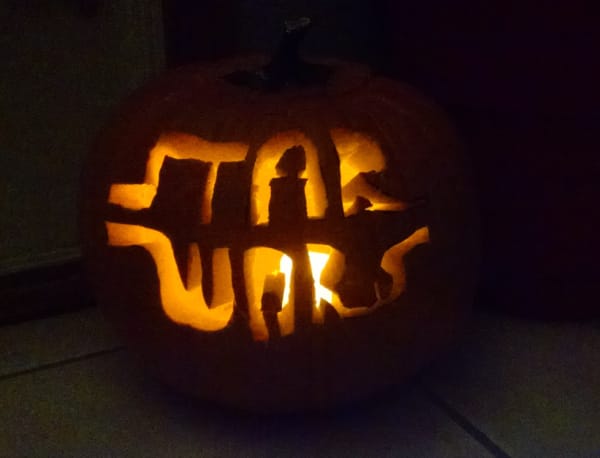Veranda Tales-And the story continues …

Storytelling has been an integral part of my life since childhood. I grew up listening to stories during the hot summer evenings and nights with my cousins. Mothers and grandmothers would gather all of us children for story time. It was usually pitch dark except for a very faint light coming from the flickering candle. Power cuts were as frequent as the hot and humid summer days. We all spread out on a cool concrete floor or bamboo mats on the veranda intently listening to fascinating stories about kings, queens, princes, princesses, and peasants alike. Stories about love, life, families, and people entertained and taught us life skills. These stories transported us to distant worlds, strange yet familiar. Often the same story told by two people sounded different as storytellers added new twists and turns adding their personal style and flair to the stories.
Storytelling wasn’t limited to summer evenings and bedtime. I was surrounded by adults who didn’t pass up an opportunity to share their wisdom using the art of storytelling. These rich vibrant oral traditions include songs, poems, stories, and సామెతలు (Sametalu are proverbs in Telugu). Men and women sing songs as they work in the fields, grinding grains and spices and doing other daily chores at their homes. Stories are often used to teach important life lessons, interpersonal skills, and survival skills. These stories and the time spent listening to them made our lives richer leaving an impression on me. This series is all about reliving those memories as I share these stories.
కథ కంచికీ - మన మింటికీ (Katha Kanchiki - manamintiki)
Primary mode of transportation during my childhood was trains and buses. They took us to visit maternal and paternal grandparents, aunts, uncles, extended family, and friends. My maternal and paternal grandparents both lived in towns which are 245 Kilometers apart along the Howrah–Chennai Mail train route in Andhra Pradesh. The train stops for just one minute at each of these stations. We would board the train at 5:45 PM in the evening after saying bye to my maternal grandparents, our aunt, and uncle. It was usually a mad rush for our parents to get on the train with luggage and children. If you are used to taking trains in Japan where train compartments (cars) stop precisely at their pre-designated location on the platform, traveling by trains in India will be a huge shock to your system. There is no way to know where the compartment you reserved your seat in would stop. You wait for the train to arrive and do a mad dash towards your compartment as it speeds by you. You dodge other passengers with their luggage, porters carrying luggage, and vendors trying to sell food, newspapers, tea, fruits, and snacks during the precious one or two minutes. There are also opportunists looking to snatch gold chains hanging around women’s necks, handbags from their arms, and wallets from men. It is a miracle to me how everybody ends up where they need to be, passengers on the train and vendors and porters on the platform after getting paid for their goods and services. It was a miracle that my parents didn’t lose one of their children or a piece of luggage and valuables during these mad rushes.
Once we settled into our seats, the train would pull forward heading south to our paternal grandparents’ place. The journey took about 5 hours and 25 minutes as the dusk turned into a pitch dark night. Once we settled into our seats, అమ్మ (Amma is mother in Telugu) opened containers of delicious food our grandmother packed for us. It was 10 or 11 PM at night by the time we reached our paternal grandparents’ place after getting off the train with luggage and riding a rickshaw from the train station.
We often lived in towns and villages that were located in between the two stations where my maternal and paternal grandparents lived on the Howrah–Chennai Mail line. We would either head up north to visit my maternal grandparents or head south to go see my paternal grandparents. I went to college in a town along the same line traveling back and forth taking the very same train during the four years of college.
On one occasion we boarded the train heading to Chennai for a change, on vacation during my 10th grade. It wasn't my first trip to Chennai, however it was the first after I was old enough to remember. I was excited and anxious about vacationing in a big city. We were living in a small village at that time. We got on the train late at night for an overnight journey. నాన్న (Nanna is father Telugu) reserved a 4 berth coupe for the four of us. It was private as we could close the door to the coupe. We had two window seats which spared the siblings from fighting over the window seat. అమ్మ (Amma) packed a large stack of puri, mutton fry, and pulihora for dinner. My mouth is watering as I write this with the memories of how delicious the food tasted.
I was wide awake planted by the window watching the surroundings as the train was pulling into the Chennai Central railway station. It is fascinating to watch ten or twenty train tracks merging in and out of each other. Some tracks lead to maintenance yards and some were just sidetracks for trains to stop as they waited for train cars to be added and removed. Whenever I watch so many train tracks in one spot, my mind wanders thinking about the parallels between train tracks and human lives. Our lives are like intersecting train tracks as our lives merge with others for periods of time and then we go our separate ways. We might meet again in the future or probably never. As I was busy thinking like a philosopher, the train stopped at the platform, and I heard నాన్న (Nanna) telling me it was time to get off the train.
On this trip we stayed with my maternal uncle and his family. I met my three cousins after ten years. I was a young child when I met them the last time. It was awkward at first, but we got to talking soon enough. My parents, sister and I went around the city visiting relatives, museums, the Marina Beach, and the famous massive banyan tree known as the Adyar, among other highlights. This 450 year old banyan tree is massive occupying an area of 40,000 square feet between the tree and its offshoots. I remember looking at armor at the Chennai museum and some creepy snakes at the zoo. I was awestruck and overwhelmed at the same time by the massive cityscape and people all around me. I didn’t know Tamil, the native language of Chennai and I wasn’t fluent in English either. I was terrified of getting lost. My fears almost came true when I boarded the wrong city bus. The bus full of passengers watched the confused teenager and her concerned father standing by the bus asking her to get off the bus. I got off the bus just in time.
నాన్న (Nanna) loved catching Hollywood movies whenever we were in bigger towns and cities. He introduced me to Hollywood movies and James Bond. He took me to all of the early James Bond movies starring Sean Connery and Roger Moore. He heard about the new blockbuster movie playing in theaters in Chennai while we were there. This was none other than the very first Star Wars movie. He bought tickets and took us to the matinee show. It was in a very large theater compared to the smaller ones I was used to in smaller towns. It was an amazing experience to be transported to a galaxy far far away watching daring Han Solo, beautiful Princess Leia with coiled up hair, confused looking Luke Skywalker, wise Yoda, and Obi-Wan Kenobi engaged in epic battles and escapes from raspy sounding Darth Vader and the empire. I remember walking out onto the street after the movie with my head still in a far away galaxy among its inhabitants.
I didn’t know at that time that Star Wars would become part of our family legacy. I watched the second and third movies after moving to the US a decade later. Then came the fourth movie, which happens to be chronologically first on the Star Wars timeline when I was pregnant with my older son. We got tickets for one of the shows on the first day. I had a 100 mile commute those days. I took the afternoon off and drove back from work to make it to the theater in time for the movie. There was a long line to get into the theaters. People were excited to be part of the magic of the second coming of the Star Wars. Most of the people at the theater watched the movie as teenagers like I did. It was magical and amazing. I ended up introducing my unborn to the magic of Star Wars and went on to watch many more with both my sons. My younger one especially loves Star Wars. We celebrated many May the 4th parties while he was in elementary and middle school with him and his friends. There were several spirited family discussions about whether Star Wars was better than StarTrek and vice versa. My sons carved Star Wars logos into Pumpkins for Halloween.
నాన్న (Nanna) would say, “కథ కంచికీ - మన మింటికీ (Katha Kanchiki - manamintiki)” as the credits rolled and the huge “END” showed up on the movie screen which means, “Story goes to Kanchi and it is time to go home”. This sameta is used to indicate end of a story or vacation very similar to the Porky Pig character in the Looney Tunes saying, “yibidee, yibidee, yibidee, That’s all folks” at the end of every video. The use of the city, Kanchi or Kanchipuram in this sameta has a cultural and historical significance. The city of Kanchipuram in Tamil Nadu, India was a centre of education. It was known as the ఘటికస్థానం (ghatikasthanam), which means, place of learning as it was a religious center of advanced education for Jainism and Buddhism between the 1st and 5th centuries. When books were written, they were sent to Kanchipuram for review and stamp of approval. Hence the sameta, “కథ కంచికీ - మన మింటికీ (Katha Kanchiki - manamintiki) was used to indicate that the book was written and sent for approval.
I remember this sameta whenever a movie or vacation ends. That brings me to the conversation about whether Star Wars will ever really go to Kanchipuram. The story keeps going and going with no end in sight with each new movie taking us chronologically back from the first trilogy. Wish you all a fabulous May the 4th.

